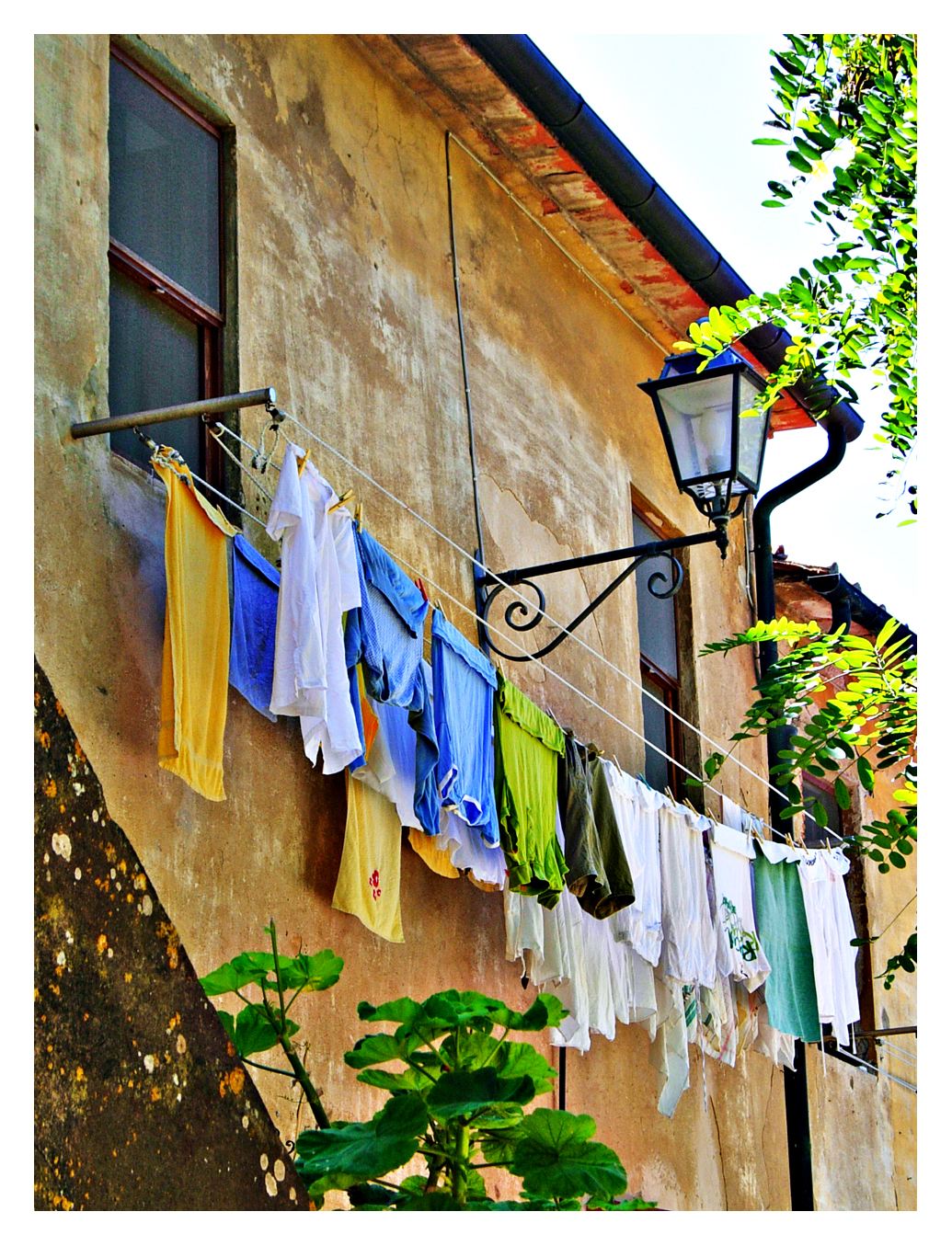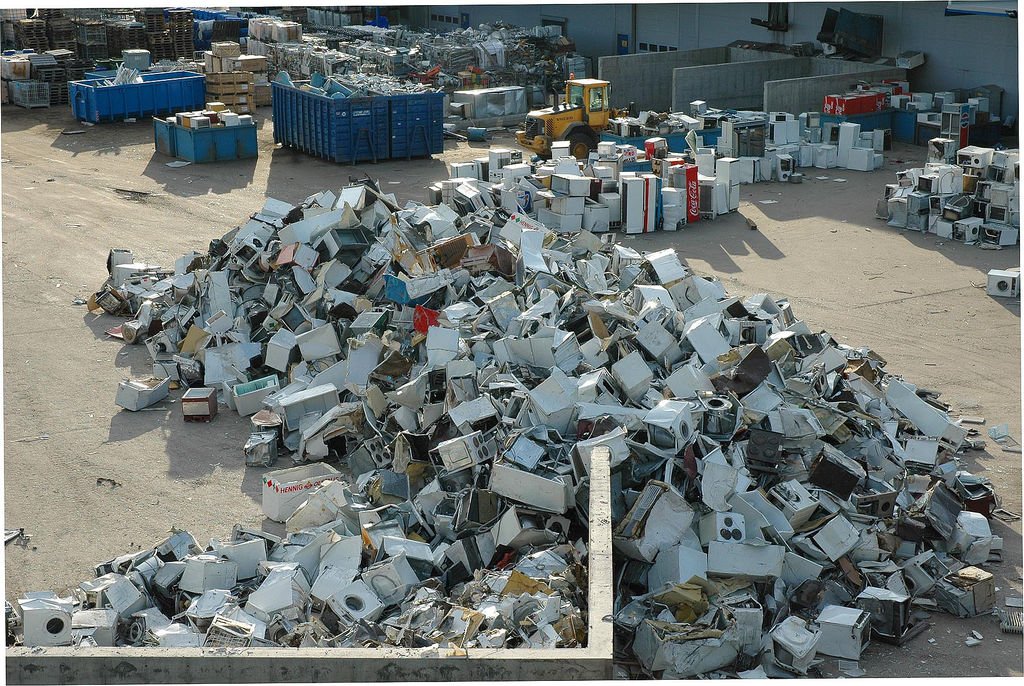If you are like me, you spend a lot of time doing laundry. It seems my washing machine is constantly running. It’s pretty simple to green your laundry. Follow these 5 green laundry tips!
Photo credit: GloriaGarcía via Foter.com / CC BY-NC-ND
GREEN LAUNDRY TIP #1: CHOOSE A NATURAL LAUNDRY DETERGENT
When Tom and Kate Chappell, founders of Tom’s of Maine, began their first company, they made laundry detergent. Since those early days, the awareness about ingredients in laundry detergent and what it does to our environment and aquatic life has grown exponentially. Although phosphates in laundry detergent have been banned in the US since the 1990s, companies continue to sell it in developing countries. In 2014, Proctor & Gamble vowed to end the use of phosphates globally in laundry products by 2016.((http://www.environmentalleader.com/2014/01/27/pg-to-end-use-of-phosphates-in-laundry-detergents/))
There are a lot of environmentally-friendly laundry soaps in both liquid and powdered form available now. Retailers, such as Whole Foods, use an eco-scale rating to help customers decide which product is right for them. We were sent Roux Maison essential laundry detergent, stain remover, and delicate laundry detergent to try.
Why choose us? It’s simple, Roux Maison is just better, no harmful chemicals, no gunk! As a parent, you gotta love that it’s so safe you can even use your finger to apply and spot treat stains. But there’s more: When combined with Roux Maison’s Laundry Detergents, our Stain Remover helps get your clothes cleaner than the current market leader! Best of all, it’s hypoallergenic – this means no more buying specific, expensive baby stain removers.
- Cleaner: Most mainstream stain removers use damaging chemicals that leave a residue that coats your fabrics and diminishes the life of your clothes. Our products rinse clean so there is nothing left but clean!
- Healthier: So safe you can use it on baby’s clothes (and pet beds) and apply or spot treat with your finger! The hypoallergenic quality makes this the perfect alternative for those with sensitive skin or allergies.
- Safer: No harsh chemicals (Paraben, Phthalate, Phosphate, and Preservative-Free) and all our bottles are BPA-free!
Roux Maison’s Stain Remover is the perfect complement for all your laundry needs. It works great by itself and provides optimal outcomes when used together with your favorite Roux Maison Laundry Detergents.
I love how concentrated these products are, as well as their effectiveness. I also love how they do not leave a lingering odor.
It used to be natural laundry soaps had a bad rap for not being effective. I remember my environmental science professor saying he just didn’t care if his whites were white. The earth was more important! I agree, but we no longer needed to make such choices. Natural laundry detergents are effective!
I really hate the smell of chemical laundry detergents. It gives me a headache and is so persistent!
GREEN LAUNDRY TIP #2: WASH ONLY IN COLD WATER
I only use cold water to wash our clothes. In fact, for many years we just didn’t even have the hot water hooked up.
The amount of energy that can be saved by washing in cold water is astounding! Real Simple explains:
SINCE ABOUT 90 PERCENT OF THE ENERGY CONSUMED WHILE RUNNING A LOAD IS — USED TO HEAT THE WATER, THE AVERAGE HO– USEHOLD OPTING FOR COLD CAN ELIMINATE AS MUCH AS 350 POUNDS OF CARBON DIOXIDE EMISSIONS ANNUALLY. FOR MOST HOMES, THIS WILL AMOUNT TO ABOUT $40 IN SAVINGS A YEAR.((http://www.realsimple.com/home-organizing/cleaning/laundry/does-washing-clothes-in-cold-water-really-get-them-clean))
Not only does washing your clothes in cold water only green your laundry through energy conservation, it also will preserve the life of your clothes. Clothes washed in cold water last longer and colors fade less.
I wish every washing machine by default washed in cold water. It’s bothersome to press a button several times to get to the cold setting. I think we would save a lot of energy if machines were automatically set to cold when turned on.

Photo credit: alessandraelle via Foter.com / CC BY-NC-ND
GREEN LAUNDRY TIP #3: HANG YOUR CLOTHES TO DRY
In the summer months, all of our wash is hung to dry. We save a lot of energy this way, and our clothes always smell fresh. In the rainy winter months, this is a bit more challenging. We do keep a drying rack by the woodstove, but I can’t keep up with all of our wash by using racks in the winter.
In European countries, clothes dryers are uncommon no matter the season. I have stayed at a bed and breakfast in Italy where there were no dryers. Sheets were hung up after every guest. I was impressed!
OPower Blog explains that hanging up your clothes to dry is the least popular method of saving energy in the US:
With approximately 85% of US households owning tumble dryers and the vast majority of them toasting up 2+ loads of sopping wet laundry per week, clothes dryers account for a big chunk of home energy use. Joining water heaters and refrigerators among the top three electricity-hogging appliances in US homes, dryers account for 6% of the country’s residential electricity consumption and each year add $9 billion to American families’ utility bills…
Most western European countries, in fact, have tumble dryer ownership rates below 50%. The most ambitious case of line drying on the continent is Italy, where clotheslines are famously ubiquitous and 95% of homes reportedly live without dryers.
Meanwhile, in the Southern Hemisphere, New Zealanders are another shining example of a people who regularly makes use of their clotheslines: 90% of Kiwi households assert that they hang dry their laundry all the time (67%) or some of the time (23%).((https://blog.opower.com/2013/07/americas-most-unpopular-way-of-saving-energy-is-one-of-europes-favorites/))
It is true that many communities have rules and regulations about outdoor clothes drying. These rules can be changed by active citizens.
Growing up, my best friend’s family did not own a dryer. We lived in one of those communities with ordinances against hanging laundry outside in view of neighbors. Her family’s basement was crisscrossed with laundry lines.
Hanging laundry takes more time, but I enjoy it. The time outside in the sunshine can be a reflective time.
GREEN LAUNDRY TIP #4: ONLY WASH FULL LOADS
This green laundry tip is probably not much of a problem for you if you have children. My loads are always full!
It can be tempting to do a smaller load of laundry just to get it done. If you wait, you will save yourself time, as well as reduce energy and water consumption. According to the Christian Science Monitor:
Even if you run the machine with small load settings, the machine is still using most of the water and most of the energy of a full load.
Let’s look at some actual numbers. A typical household can save 3,400 gallons of water a year by running full laundry loads instead of half loads, according to the U.S. Department of Energy. Given a national average of $1.50 per 1,000 gallons of water, that’s an annual savings of $5.15 from just the water in the washing machine over the course of a year.
What about energy costs? Numbers vary, but the sources I’ve seen seem to estimate that a small load of clothes (say, half a load) will use somewhere between 60% and 75% of the energy of a large load of clothes.((http://www.csmonitor.com/Business/The-Simple-Dollar/2012/0125/Only-run-full-loads-of-dishes-and-clothes))

Photo credit: @abrunvoll via Foter.com / CC BY-NC-SA
GREEN LAUNDRY TIP #5: UPGRADE TO A NEW MACHINE
Fortunately, modern machines are water and energy efficient than their predecessors. When your old machine dies, look for the most energy and water conserving model to replace it. The Energy Star label is one easy way to compare machines.
Consider the following:
- Use less energy. On average, a new ENERGY STAR certified clothes washer uses 280 KWh of electricity and can save you $40 a year on your utility bills compared to a standard model.
- Use less water. A full-sized ENERGY STAR certified clothes washer uses 13 gallons of water per load, compared to the 23 gallons used by a standard machine. That’s a savings of more than 3,000 gallons of water, per year!!
- Is your washer over 10 years old? It’s estimated that there are 76 million top-loading washers, 25 million of which are at least 10 years old, still in use across the country. Washers built before 2003 are significantly less efficient than newer models. Together, these inefficient washers cost consumers $2.9 billion each year in energy and water. If you have a standard clothes washer that is over 10 years old, it’s costing you, on average $180 a year.
If every clothes washer purchased in the U.S. was ENERGY STAR certified, we could save more than $4 billion each year and prevent more than 19 billion pounds of annual greenhouse gas emissions, equal to the emissions from 1.8 million vehicles.((https://www.energystar.gov/products/appliances/clothes_washers))
Wow, that’s a lot of vehicles!
The production of new appliances also uses energy and resources. Upgrading to a new machine should be carefully considered. If your machine is still working properly, even if ten-years-old, it may be greener to wait.

Thanks for sharing this information about going green with laundry tips. These can even be used if you use a laundromat to wash your clothes. I love that there is a greener way to every day tasks!
I love being eco-friendly, and try to do what I can. These tips are great – I will be putting them into practive, thanks for sharing!
We always try to wash our clothes in cold water because it saves money on the utility bill, and it prevents clothes from shrinking. I’m glad to see that it’s eco-friendly as well! Thanks for sharing!
I had no idea that clothes dryers were in the top three things using the most amounts of energy. I can see why air drying your clothes might help save on energy. However, I did this for a couple years and my clothes always felt crusty after they were dried. If you can get used to that feeling, then this could definitely help you save money.